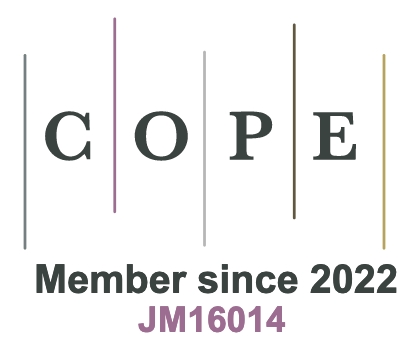REFERENCES
1. Morkoç, H.; Strite, S.; Gao, G. B.; Lin, M. E.; Sverdlov, B.; Burns, M. Large-band-gap SiC, III-V nitride, and II-VI ZnSe-based semiconductor device technologies. J. Appl. Phys. 1994, 76, 1363-98.
2. Kimoto, T.; Cooper, J. A. Fundamentals of silicon carbide technology: growth, characterization, devices and applications. John Wiley & Sons, 2014.
3. Wellmann, P.; Ohtani, N.; Rupp, R. Wide bandgap semiconductors for power electronics: materials, devices, applications. Wiley Online Library, 2021.
4. Koehl, W. F.; Buckley, B. B.; Heremans, F. J.; Calusine, G.; Awschalom, D. D. Room temperature coherent control of defect spin qubits in silicon carbide. Nature 2011, 479, 84-7.
5. Castelletto, S.; Johnson, B. C.; Ivády, V.; et al. A silicon carbide room-temperature single-photon source. Nat. Mater. 2014, 13, 151-6.
6. Schöner, A.; Krieger, M.; Pensl, G.; Abe, M.; Nagasawa, H. Fabrication and characterization of 3C-SiC-based MOSFETs. Chem. Vap. Depos. 2006, 12, 523-30.
7. Aldalbahi, A.; Li, E.; Rivera, M.; et al. A new approach for fabrications of SiC based photodetectors. Sci. Rep. 2016, 6, 23457.
8. Protik, N. H.; Katre, A.; Lindsay, L.; Carrete, J.; Mingo, N.; Broido, D. Phonon thermal transport in 2H, 4H and 6H silicon carbide from first principles. Mater. Today. Phys. 2017, 1, 31-8.
9. Kawamura, T.; Hori, D.; Kangawa, Y.; Kakimoto, K.; Yoshimura, M.; Mori, Y. Thermal conductivity of SiC calculated by molecular dynamics. Jpn. J. Appl. Phys. 2008, 47, 8898.
10. Zywietz, A.; Karch, K.; Bechstedt, F. Influence of polytypism on thermal properties of silicon carbide. Phys. Rev. B. Condens. Matter. 1996, 54, 1791-8.
11. Qian, X.; Jiang, P.; Yang, R. Anisotropic thermal conductivity of 4H and 6H silicon carbide measured using time-domain thermoreflectance. Mater. Today. Phys. 2017, 3, 70-5.
12. Burgemeister, E. A.; von Muench, W.; Pettenpaul, E. Thermal conductivity and electrical properties of 6H silicon carbide. J. Appl. Phys. 1979, 50, 5790-4.
13. Cheng, Z.; Liang, J.; Kawamura, K.; et al. High thermal conductivity in wafer-scale cubic silicon carbide crystals. Nat. Commun. 2022, 13, 7201.
14. Wei, R.; Song, S.; Yang, K.; et al. Thermal conductivity of 4H-SiC single crystals. J. Appl. Phys. 2013, 113, 053503.
15. Zheng, Q.; Li, C.; Rai, A.; Leach, J. H.; Broido, D. A.; Cahill, D. G. Thermal conductivity of GaN, 71GaN, and SiC from 150 K to 850 K. Phys. Rev. Mater. 2019, 3, 014601.
16. Slack, G. A. Thermal conductivity of pure and impure silicon, silicon carbide, and diamond. J. Appl. Phys. 1964, 35, 3460-6.
17. Morelli, D. T.; Heremans, J. P.; Beetz, C. P.; Yoo, W. S.; Matsunami, H. Phonon-electron scattering in single crystal silicon carbide. Appl. Phys. Lett. 1993, 63, 3143-5.
18. Nilsson, O.; Mehling, H.; Horn, R.; et al. Determination of the thermal diffusivity and conductivity of monocrystalline silicon carbide (300-2300 K). High. Temp. High. Press. 1997, 29, 73-9.
19. Boteler, L.; Lelis, A.; Berman, M.; Fish, M. Thermal conductivity of power semiconductors - when does it matter? In 2019 IEEE 7th Workshop on Wide Bandgap Power Devices and Applications (WIPDA), Raleigh, USA. Oct 29-31, 2019. IEEE; 2019. pp. 270-6.
20. Goela, J. S.; Brese, N. E.; Pickering, M. A.; Graebner, J. E. Chemical-vapor-deposited materials for high thermal conductivity applications. MRS. Bull. 2001, 26, 458-63.
21. Hoang, T. M.; Ishiwata, H.; Masuyama, Y.; et al. Thermometric quantum sensor using excited state of silicon vacancy centers in 4H-SiC devices. Appl. Phys. Lett. 2021, 118, 044001.
22. Yang, G.; Luo, H.; Li, J.; et al. Discrimination of dislocations in 4H-SiC by inclination angles of molten-alkali etched pits. J. Semicond. 2022, 43, 122801.
23. Kawahara, C.; Suda, J.; Kimoto, T. Identification of dislocations in 4H-SiC epitaxial layers and substrates using photoluminescence imaging. Jpn. J. Appl. Phys. 2014, 53, 020304.
24. Yang, G.; Xu, L.; Cui, C.; Pi, X.; Yang, D.; Wang, R. Anisotropic etching mechanisms of 4H-SiC: experimental and first-principles insights. J. Semicond. 2024, 45, 012502.
25. Wang, P.; Cheng, W.; Li, Y.; et al. Stacking faults in 4H-SiC epilayers and IGBTs. Mater. Sci. Semicond. Process. 2024, 177, 108369.
26. Harris, S. An introduction to the theory of the Boltzmann equation. Courier Corporation, 2004. https://books.google.com/books?id=KfYK1lyq3VYC&printsec=frontcover#v=onepage&q&f=false. (accessed 14 May 2025).
27. Tadano, T.; Gohda, Y.; Tsuneyuki, S. Anharmonic force constants extracted from first-principles molecular dynamics: applications to heat transfer simulations. J. Phys. Condens. Matter. 2014, 26, 225402.
28. Li, W.; Carrete, J.; A,
29. Madsen, G. K.; Carrete, J.; Verstraete, M. J. BoltzTraP2, a program for interpolating band structures and calculating semi-classical transport coefficients. Comput. Phys. Commun. 2018, 231, 140-5.
30. Carrete, J.; Vermeersch, B.; Katre, A.; et al. almaBTE: a solver of the space–time dependent Boltzmann transport equation for phonons in structured materials. Comput. Phys. Commun. 2017, 220, 351-62.
31. Zhou, J.; Park, J.; Lu, I.; Maliyov, I.; Tong, X.; Bernardi, M. PERTURBO: a software package for ab initio electron–phonon interactions, charge transport and ultrafast dynamics. Comput. Phys. Commun. 2021, 264, 107970.
32. Cepellotti, A.; Coulter, J.; Johansson, A.; Fedorova, N. S.; Kozinsky, B. Phoebe: a high-performance framework for solving phonon and electron Boltzmann transport equations. J. Phys. Mater. 2022, 5, 035003.
33. Bi, K.; Chen, Y.; Yang, J.; Wang, Y.; Chen, M. Molecular dynamics simulation of thermal conductivity of single-wall carbon nanotubes. Phys. Lett. A. 2006, 350, 150-3.
34. Kannam, S. K.; Todd, B. D.; Hansen, J. S.; Daivis, P. J. Slip length of water on graphene: limitations of non-equilibrium molecular dynamics simulations. J. Chem. Phys. 2012, 136, 024705.
35. Yu, J.; Wang, H. A molecular dynamics investigation on evaporation of thin liquid films. Int. J. Heat. Mass. Transf. 2012, 55, 1218-25.
36. Thompson, A. P.; Aktulga, H. M.; Berger, R.; et al. LAMMPS - a flexible simulation tool for particle-based materials modeling at the atomic, meso, and continuum scales. Comput. Phys. Commun. 2022, 271, 108171.
37. Haile, J. M. Molecular dynamics simulation: elementary methods. John Wiley & Sons, Inc., 1992. https://dl.acm.org/doi/10.5555/531139. (accessed 14 May 2025).
38. Kubo, R. Statistical-mechanical theory of irreversible processes. I. General theory and simple applications to magnetic and conduction problems. J. Phys. Soc. Jpn. 1957, 12, 570-86.
39. Müller-Plathe, F. A simple nonequilibrium molecular dynamics method for calculating the thermal conductivity. J. Chem. Phys. 1997, 106, 6082-5.
40. Ikeshoji, T.; Hafskjold, B. Non-equilibrium molecular dynamics calculation of heat conduction in liquid and through liquid-gas interface. Mol. Phys. 1994, 81, 251-61.
41. Jund, P.; Jullien, R. Molecular-dynamics calculation of the thermal conductivity of vitreous silica. Phys. Rev. B. 1999, 59, 13707-11.
42. Sarman, S. S.; Evans, D. J.; Cummings, P. T. Recent developments in non-Newtonian molecular dynamics. Phys. Rep. 1998, 305, 1-92.
43. Cummings, P. T.; Evans, D. J. Nonequilibrium molecular dynamics approaches to transport properties and non-Newtonian fluid rheology. Ind. Eng. Chem. Res. 1992, 31, 1237-52.
44. Salaway, R. N.; Zhigilei, L. V. Molecular dynamics simulations of thermal conductivity of carbon nanotubes: resolving the effects of computational parameters. Int. J. Heat. Mass. Transf. 2014, 70, 954-64.
45. Fan, Z.; Dong, H.; Harju, A.; Ala-Nissila, T. Homogeneous nonequilibrium molecular dynamics method for heat transport and spectral decomposition with many-body potentials. Phys. Rev. B. 2019, 99, 064308.
46. Ying, P.; Liang, T.; Xu, K.; et al. Sub-micrometer phonon mean free paths in metal-organic frameworks revealed by machine learning molecular dynamics simulations. ACS. Appl. Mater. Interfaces. 2023, 15, 36412-22.
47. Wang, Y.; Fan, Z.; Qian, P.; Caro, M. A.; Ala-Nissila, T. Quantum-corrected thickness-dependent thermal conductivity in amorphous silicon predicted by machine learning molecular dynamics simulations. Phys. Rev. B. 2023, 107, 054303.
48. Xu, K.; Hao, Y.; Liang, T.; et al. Accurate prediction of heat conductivity of water by a neuroevolution potential. J. Chem. Phys. 2023, 158, 204114.
49. de Araujo Oliveira, H.; Fan, Z.; Harju, A.; Pereira, L. F. C. Tuning the thermal conductivity of silicon phononic crystals via defect motifs: implications for thermoelectric devices and photovoltaics. ACS. Appl. Nano. Mater. 2025, 8, 4364-72.
50. Mortazavi, B. Recent advances in machine learning-assisted multiscale design of energy materials. Adv. Energy. Mater. 2025, 15, 2403876.
51. Shimamura, K.; Takeshita, Y.; Fukushima, S.; Koura, A.; Shimojo, F. Computational and training requirements for interatomic potential based on artificial neural network for estimating low thermal conductivity of silver chalcogenides. J. Chem. Phys. 2020, 153, 234301.
52. Qian, X.; Peng, S.; Li, X.; Wei, Y.; Yang, R. Thermal conductivity modeling using machine learning potentials: application to crystalline and amorphous silicon. Mater. Today. Phys. 2019, 10, 100140.
53. Zeng, Z.; Zhang, C.; Xia, Y.; Fan, Z.; Wolverton, C.; Chen, Y. Nonperturbative phonon scatterings and the two-channel thermal transport in Tl3VSe4. Phys. Rev. B. 2021, 103, 224307.
54. Korotaev, P.; Novoselov, I.; Yanilkin, A.; Shapeev, A. Accessing thermal conductivity of complex compounds by machine learning interatomic potentials. Phys. Rev. B. 2019, 100, 144308.
55. Ouyang, Y.; Yu, C.; He, J.; Jiang, P.; Ren, W.; Chen, J. Accurate description of high-order phonon anharmonicity and lattice thermal conductivity from molecular dynamics simulations with machine learning potential. Phys. Rev. B. 2022, 105, 115202.
56. Li, R.; Lee, E.; Luo, T. A unified deep neural network potential capable of predicting thermal conductivity of silicon in different phases. Mater. Today. Phys. 2020, 12, 100181.
57. Zhao, C. Y.; Tao, Y. B.; He, Y. Microstructure and thermophysical property prediction for chloride composite phase change materials: a deep potential molecular dynamics study. J. Phys. Chem. C. 2023, 127, 6852-60.
58. Sun, Z.; Qi, Z.; Liang, K.; et al. A neuroevolution potential for predicting the thermal conductivity of α, β, and ε-Ga2O3. Appl. Phys. Lett. 2023, 123, 192202.
59. Zhang, P.; Zhang, Z.; Liu, Y.; Wang, Z.; Lu, Z.; Xiong, R. Phonon thermal transport in Bi2Te3 from a deep-neural-network interatomic potential. Phys. Rev. Appl. 2022, 18, 054022.
60. Ouyang, N.; Wang, C.; Chen, Y. Temperature- and pressure-dependent phonon transport properties of SnS across phase transition from machine-learning interatomic potential. Int. J. Heat. Mass. Transf. 2022, 192, 122859.
61. Wieser, S.; Zojer, E. Machine learned force-fields for an Ab-initio quality description of metal-organic frameworks. npj. Comput. Mater. 2024, 10, 1205.
62. Zhang, P.; Liao, W.; Zhu, Z.; et al. Tuning the lattice thermal conductivity of Sb2Te3 by Cr doping: a deep potential molecular dynamics study. Phys. Chem. Chem. Phys. 2023, 25, 15422-32.
63. Fu, B.; Sun, Y.; Jiang, W.; et al. Determining the thermal conductivity and phonon behavior of SiC materials with quantum accuracy via deep learning interatomic potential model. J. Nucl. Mater. 2024, 591, 154897.
64. Behler, J.; Parrinello, M. Generalized neural-network representation of high-dimensional potential-energy surfaces. Phys. Rev. Lett. 2007, 98, 146401.
65. Bartók, A. P.; Payne, M. C.; Kondor, R.; Csányi, G. Gaussian approximation potentials: the accuracy of quantum mechanics, without the electrons. Phys. Rev. Lett. 2010, 104, 136403.
66. Caro, M. A. Optimizing many-body atomic descriptors for enhanced computational performance of machine learning based interatomic potentials. Phys. Rev. B. 2019, 100, 024112.
67. Byggmästar, J.; Nordlund, K.; Djurabekova, F. Simple machine-learned interatomic potentials for complex alloys. Phys. Rev. Mater. 2022, 6, 083801.
68. Thompson, A.; Swiler, L.; Trott, C.; Foiles, S.; Tucker, G. Spectral neighbor analysis method for automated generation of quantum-accurate interatomic potentials. J. Comput. Phys. 2015, 285, 316-30.
69. Novikov, I. S.; Gubaev, K.; Podryabinkin, E. V.; Shapeev, A. V. The MLIP package: moment tensor potentials with MPI and active learning. Mach. Learn. Sci. Technol. 2021, 2, 025002.
70. Wang, H.; Zhang, L.; Han, J.; E, W. DeePMD-kit: a deep learning package for many-body potential energy representation and molecular dynamics. Comput. Phys. Commun. 2018, 228, 178-84.
71. Drautz, R. Atomic cluster expansion for accurate and transferable interatomic potentials. Phys. Rev. B. 2019, 99, 014104.
72. Fan, Z.; Zeng, Z.; Zhang, C.; et al. Neuroevolution machine learning potentials: combining high accuracy and low cost in atomistic simulations and application to heat transport. Phys. Rev. B. 2021, 104, 104309.
73. Fan, Z. Improving the accuracy of the neuroevolution machine learning potential for multi-component systems. J. Phys. Condens. Matter. 2022, 34, 125902.
74. Fan, Z.; Wang, Y.; Ying, P.; et al. GPUMD: a package for constructing accurate machine-learned potentials and performing highly efficient atomistic simulations. J. Chem. Phys. 2022, 157, 114801.
75. Evans, D. J.; Morriss, G. Statistical mechanics of nonequilbrium liquids, 2nd ed.; ANU Press, 2007.
76. Cheng, R.; Shen, X.; Klotz, S.; et al. Lattice dynamics and thermal transport of PbTe under high pressure. Phys. Rev. B. 2023, 108, 104306.
77. Zhang, L.; Lin, D.; Wang, H.; Car, R.; E, W. Active learning of uniformly accurate interatomic potentials for materials simulation. Phys. Rev. Mater. 2019, 3, 023804.
78. Zhang, Y.; Wang, H.; Chen, W.; et al. DP-GEN: a concurrent learning platform for the generation of reliable deep learning based potential energy models. Comput. Phys. Commun. 2020, 253, 107206.
79. Liu, Y.; Wang, H.; Guo, L.; et al. Deep learning inter-atomic potential for irradiation damage in 3C-SiC. Comput. Mater. Sci. 2024, 233, 112693.
80. Lim, J.; Shim, Y.; Park, J.; et al. Molecular dynamics study of silicon carbide using an ab initio-based neural network potential: effect of composition and temperature on crystallization behavior. J. Phys. Chem. C. 2023, 127, 22692-703.
81. Jain, A.; Ong, S. P.; Hautier, G.; et al. Commentary: The Materials Project: a materials genome approach to accelerating materials innovation. APL. Mater. 2013, 1, 011002.
82. Plimpton, S. Fast parallel algorithms for short-range molecular dynamics. J. Comput. Phys. 1995, 117, 1-19.
83. Tersoff, J. Modeling solid-state chemistry: Interatomic potentials for multicomponent systems. Phys. Rev. B. Condens. Matter. 1989, 39, 5566-8.
84. Chen, C.; Ong, S. P. A universal graph deep learning interatomic potential for the periodic table. Nat. Comput. Sci. 2022, 2, 718-28.
85. Qi, J.; Ko, T. W.; Wood, B. C.; Pham, T. A.; Ong, S. P. Robust training of machine learning interatomic potentials with dimensionality reduction and stratified sampling. npj. Comput. Mater. 2024, 10, 1227.
86. Kresse, G.; Hafner, J. Ab initio molecular dynamics for liquid metals. Phys. Rev. B. Condens. Matter. 1993, 47, 558-61.
87. Kresse, G.; Hafner, J. Ab initio molecular-dynamics simulation of the liquid-metal-amorphous-semiconductor transition in germanium. Phys. Rev. B. Condens. Matter. 1994, 49, 14251-69.
88. Kresse, G.; Furthmüller, J. Efficiency of ab-initio total energy calculations for metals and semiconductors using a plane-wave basis set. Comput. Mater. Sci. 1996, 6, 15-50.
89. Kresse, G.; Furthmüller, J. Efficient iterative schemes for ab initio total-energy calculations using a plane-wave basis set. Phys. Rev. B. Condens. Matter. 1996, 54, 11169-86.
90. Blöchl, P. E. Projector augmented-wave method. Phys. Rev. B. Condens. Matter. 1994, 50, 17953-79.
91. Kresse, G.; Joubert, D. From ultrasoft pseudopotentials to the projector augmented-wave method. Phys. Rev. B. 1999, 59, 1758-75.
92. Shapeev, A. V. Moment tensor potentials: a class of systematically improvable interatomic potentials. Multiscale. Model. Simul. 2016, 14, 1153-73.
93. Feldman, D. W.; Parker, J. H.; Choyke, W. J.; Patrick, L. Phonon dispersion curves by Raman scattering in SiC, polytypes 3C, 4H, 6H, 15R, and 21R. Phys. Rev. 1968, 173, 787-93.
94. Zhang, H.; Jiang, X.; Zhang, H.; Pi, X.; Yang, D.; Deng, T. Phonon folding and transport in SiC polytypes from first principles. Appl. Phys. Lett. 2025, 126, 142202.
95. Zhou, W.; Liang, N.; Wu, X.; Xiong, S.; Fan, Z.; Song, B. Insight into the effect of force error on the thermal conductivity from machine-learned potentials. Mater. Today. Phys. 2025, 50, 101638.
96. Wu, X.; Zhou, W.; Dong, H.; et al. Correcting force error-induced underestimation of lattice thermal conductivity in machine learning molecular dynamics. J. Chem. Phys. 2024, 161, 014103.
97. Petretto, G.; Dwaraknath, S.; Miranda, H. P. C.; et al. High-throughput density-functional perturbation theory phonons for inorganic materials. Sci. Data. 2018, 5, 180065.
98. Zhou, H.; Zhou, S.; Hua, Z.; Bawane, K.; Feng, T. Extreme sensitivity of higher-order interatomic force constants and thermal conductivity to the energy surface roughness of exchange-correlation functionals. Appl. Phys. Lett. 2023, 123, 192201.
99. Karch, K.; Pavone, P.; Windl, W.; Schütt, O.; Strauch, D. Ab initio calculation of structural and lattice-dynamical properties of silicon carbide. Phys. Rev. B. Condens. Matter. 1994, 50, 17054-63.








